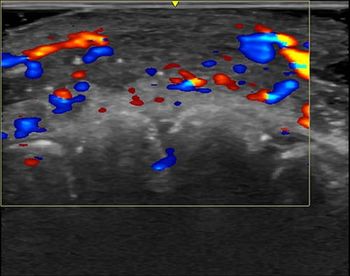
Fluoroscopic Time and Contrast Reduced in Uterine Artery Embolization
Fluoroscopic time and contrast media volume were significantly reduced when fellows received one year of formalized training.
Interventional radiology fellows were able to significantly reduce their fluoroscopic time and contrast media volume during uterine artery embolization during the course of one year of fellowship training, according to the results of a single-center study.
The learning curve during the year for formalized training resulted, on average, in a 33 percent reduction in overall radiation use and a significant reduction in contrast utilization.
“In the era of performance-based metrics and the need for credentialing, data such as this is critical to maintain our leadership role in establishing the quality and safety metrics associated with uterine artery embolization,” study author David Liu, MD, associate clinical professor, department of radiology, University of British Columbia, Vancouver, told Diagnostic Imaging. “Although retrospective in nature, the large patient population and consistent improvement of our trainees over the course of a year of training further validates the need for formalized interventional radiology fellowships.”
According to Liu and colleagues uterine artery embolization is a diagnostically and technically challenging procedure. In the past, they have used fluoroscopy time and contrast media volume as a measure of skill in operators, and reductions in these measures have been linked to reduction in procedural risk.
To evaluate whether or not a formalized training program would reduce these two metrics, Liu and colleagues performed a retrospective study between July 2009 and July 2012 in 323 consecutive women treated with uterine artery embolization for symptomatic uterine leiomyomas. Twelve interventional fellows performed the procedures under the supervision of experienced radiologists. The results of this study were published in the
During the one-year training fellowship, the median number of uterine artery embolization procedures performed per fellow was 27. For all of the procedures, the mean fluoroscopic time was 24.6 minutes per study and the mean contrast media volume per procedure was 190 mL. Technical success was achieved in all but four patients who had failure of bilateral embolization.
Results indicated that interventional fellows decreased their fluoroscopic time by 56 seconds per month of their training (P<.001). In addition, uterine volume had no significant effect on fluoroscopic time; however, it did significantly increase contrast volume use, with an increase of 0.02 mL per cubic centimeter of uterus (P<.001). With each month of fellowship training, there was a significant decrease in contrast media volume (P=.05).
Overall, there was a training effect that correlated to a significant decrease in fluoroscopic time (P<.001) and contrast media volume (P=.02) throughout the one-year training, which equated to a decrease of 12 minutes of fluoroscopy time and a 17 mL decrease in contrast.
“The notable reduction in overall radiation and contrast is further testimony to the need for formal training and observation in order to ensure safety to the patient and efficiency in performance,” said Liu. “Advanced procedures such as uterine artery embolization require formalized training and without expertise in diagnostic and interventional radiology, the safety and ethics of non-radiologists performing this procedure come into question.”
Newsletter
Stay at the forefront of radiology with the Diagnostic Imaging newsletter, delivering the latest news, clinical insights, and imaging advancements for today’s radiologists.




























